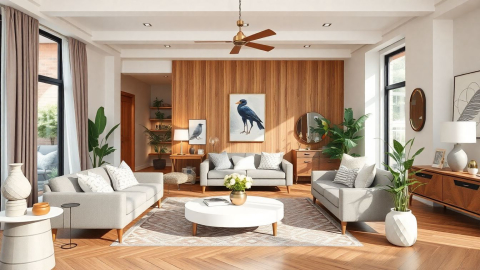Coastal Interior Design: A Comprehensive Guide to Creating Serene Seaside Spaces
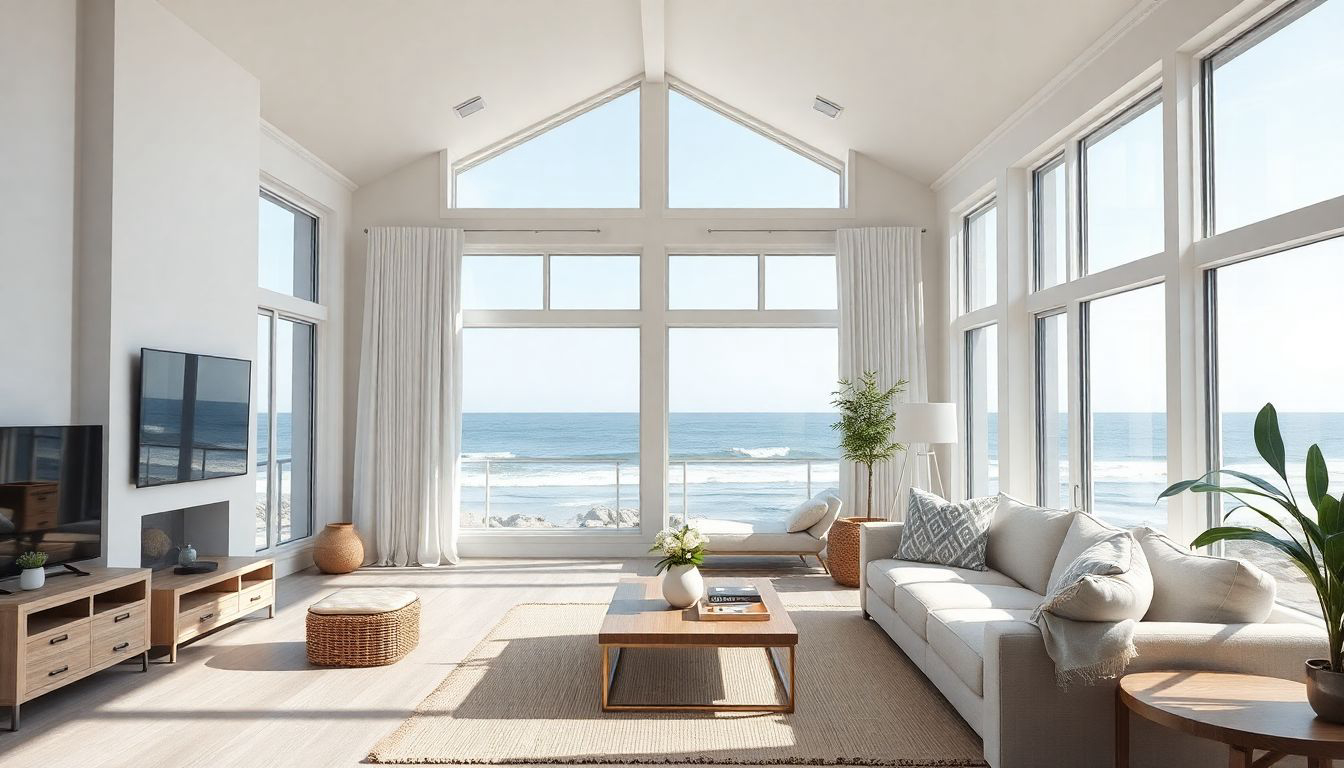
The allure of the coast, with its gentle waves, sandy shores, and expansive horizons, has long inspired interior designers and homeowners alike. Coastal interior design captures the essence of seaside living, bringing the tranquility and beauty of the beach into our homes. This style goes beyond mere nautical motifs, embracing a broader aesthetic that reflects the serenity of the shore and the simplicity of a laid-back beach lifestyle. Whether you live by the sea or simply long for a breezy, beach-inspired atmosphere, coastal design offers a versatile and timeless approach to creating spaces that feel both refreshing and relaxing.
The Essence of Coastal Design
At its core, coastal interior design is about creating spaces that reflect the natural elements of the seaside environment. It's characterized by light, airy rooms bathed in whites, blues, and natural tones, evoking a sense of calm and relaxation. As designer Caroline Kopp notes, "Coastal style is all about that feeling of peace and fun that you get from being near the water."
Colors of the Coast
The color palette is perhaps the most defining feature of coastal design. Drawing inspiration directly from the beach landscape, coastal interiors typically feature:
- Whites and Neutrals: Sun-bleached whites, sandy beiges, and soft creams form the foundation of the coastal color scheme.
- Ocean Blues and Greens: Various shades of blue and green, reminiscent of sea and sky, add depth and character.
- Accent Colors: Subtle pops of coral, yellow, or seafoam green can bring life to the space, much like colorful seashells on the shore.
Designer Nicole Martel emphasizes the importance of color in coastal design, stating, "Anyone can bring coastal design into their space just by using the right colors."
Textures and Materials
Coastal design celebrates natural textures and materials that mimic the seaside environment:
- Natural Fibers: Jute, sisal, and seagrass are commonly used in rugs and accessories, adding an earthy touch to the space.
- Weathered Woods: Light, weathered wood finishes, reminiscent of driftwood, are perfect for furniture and flooring.
- Linen and Cotton: Soft, breathable fabrics in light colors contribute to the airy feel of coastal interiors.
Key Elements of Coastal Interior Design
Abundant Natural Light
Light plays a crucial role in coastal design. Large windows, glass doors, and skylights are essential for flooding the space with natural light. Designer Ally Maloney suggests, "I love wide plank white oak floors. I also love rift sawn or quarter sawn white oak cabinets and furniture. Teak is also a great material for coastal style homes."
Open and Airy Spaces
Coastal interiors often feature open floor plans that allow for seamless flow between rooms, mimicking the expansive feel of the beach. This openness is enhanced by:
- Minimal window treatments
- Strategic furniture placement to maintain clear sightlines
- Use of light, reflective surfaces to amplify natural light
Relaxed and Comfortable Furnishings
Comfort is key in coastal design. Furniture should be inviting and easy to maintain:
- Slipcovered sofas and chairs in light, washable fabrics
- Weathered wood dining tables and coffee tables
- Woven rattan or wicker accent pieces
Coastal-Inspired Accessories
While it's important not to overdo beachy themes, carefully chosen accessories can enhance the coastal vibe:
- Artwork featuring seascapes or abstract interpretations of water and sand
- Natural elements like driftwood, seashells, or coral as decorative accents
- Textiles with subtle coastal motifs or stripes
Creating a Coastal Look: Tips and Tricks
1. Balance is Key
Avoid going overboard with beach-themed decor. As Lilias Morrison, a renowned designer on the Outer Banks, advises, "We didn't want to turn the oceanfront into suburbia by the sea. We placed a great emphasis on preservation and conservation."
2. Incorporate Architectural Elements
Consider adding architectural details that evoke a coastal feel:
- Shiplap or beadboard on walls
- Exposed wooden beams
- Built-in window seats or bookshelves
3. Play with Texture
Mix and match textures to add depth and interest to your space:
- Pair smooth, painted surfaces with rough, natural fibers
- Combine sleek glass elements with weathered wood
- Layer different textiles for a cozy, lived-in feel
4. Bring the Outdoors In
Connect your interior spaces with the natural world outside:
- Use large windows or sliding glass doors to frame outdoor views
- Incorporate indoor plants that thrive in coastal environments
- Choose organic shapes and forms for furniture and decor
Regional Variations in Coastal Design
Coastal design can vary significantly depending on the region, each with its unique characteristics:
- New England Coastal: Often features darker woods and more traditional nautical elements.
- Mediterranean Coastal: Incorporates terracotta tones and ornate architectural details.
- Tropical Coastal: Embraces bolder colors and lush, tropical motifs.
- Scandinavian Coastal: Combines coastal elements with minimalist Scandinavian design principles.
The Evolution of Coastal Design
While traditional coastal design has been around for decades, modern interpretations continue to evolve. The "Coastal Grandmother" aesthetic, popularized on social media, offers a fresh take on the style. This look combines coastal elements with a cozy, lived-in feel, emphasizing comfort and timeless elegance.
As designer Courtnay Tartt Elias notes, "There's certainly a desire to bring the soothing nature of the outdoors in, and to erase the line between the two. I believe that this feeling or desire is what really helped coastal style take off."
Sustainable Coastal Design
As environmental awareness grows, there's an increasing focus on sustainable practices in coastal design:
- Using eco-friendly materials and finishes
- Incorporating energy-efficient lighting and appliances
- Choosing locally sourced decor and furniture to reduce carbon footprint
Conclusion: Creating Your Coastal Haven
Coastal interior design offers a timeless approach to creating serene, inviting spaces that capture the essence of seaside living. By focusing on light, natural elements, and a soothing color palette, you can transform any space into a coastal retreat, regardless of its proximity to the shore. Remember, the key to successful coastal design lies in its ability to evoke a sense of relaxation and connection to nature, rather than in literal beach-themed decor.
As you embark on your coastal design journey, let the natural beauty of the seaside guide your choices, but don't be afraid to infuse your personal style. Whether you're drawn to the crisp whites of a New England beach house or the sun-washed hues of a Mediterranean villa, coastal design offers endless possibilities for creating a space that feels like a permanent vacation.
References and Further Reading
- Designer Lilias J. Morrison: Homes should 'blend into land'
- Nautical and Coastal Interior Decor & Design Guide
- Coastal Interior Design: Everything You Need to Know About This Nautical and Serene Style
- So Your Style Is: Coastal
- How to Make a Small Coastal Home Feel Spacious
- Coastal Decor & Interior Design Guide | How to Decorate Coastal
- Your Guide to the Coastal Grandmother Aesthetic
- Getting To Know Coastal Style Decorating
More Articles
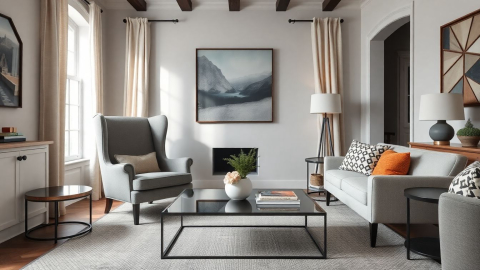
Transitional Interior Design: Mastering the Art of Blending Traditional and Modern Aesthetics
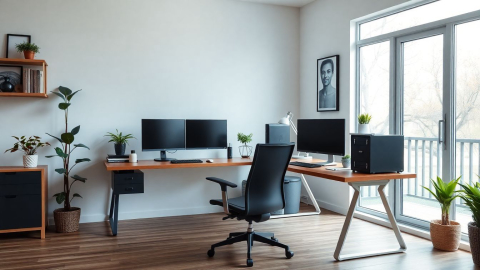
Inspiring Modern Home Office Design for 2024: A Comprehensive Guide
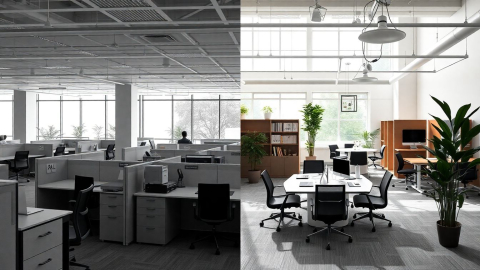
The Evolution of Office Interior Design: Creating Productive and Inspiring Workspaces
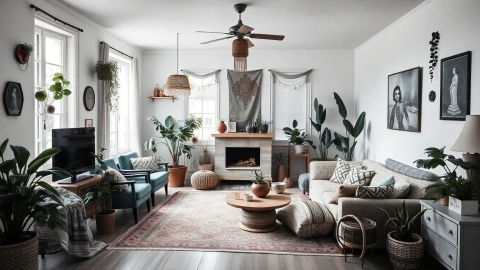
The Art of Bohemian Interior Design: Embracing Free-Spirited Elegance
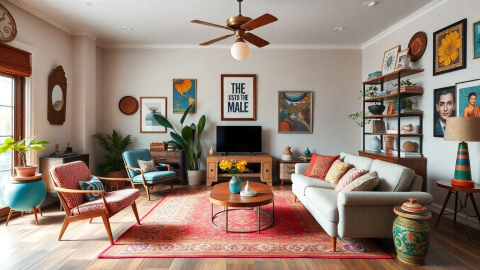
The Art of Eclectic Interior Design: Blending Styles with Soul
